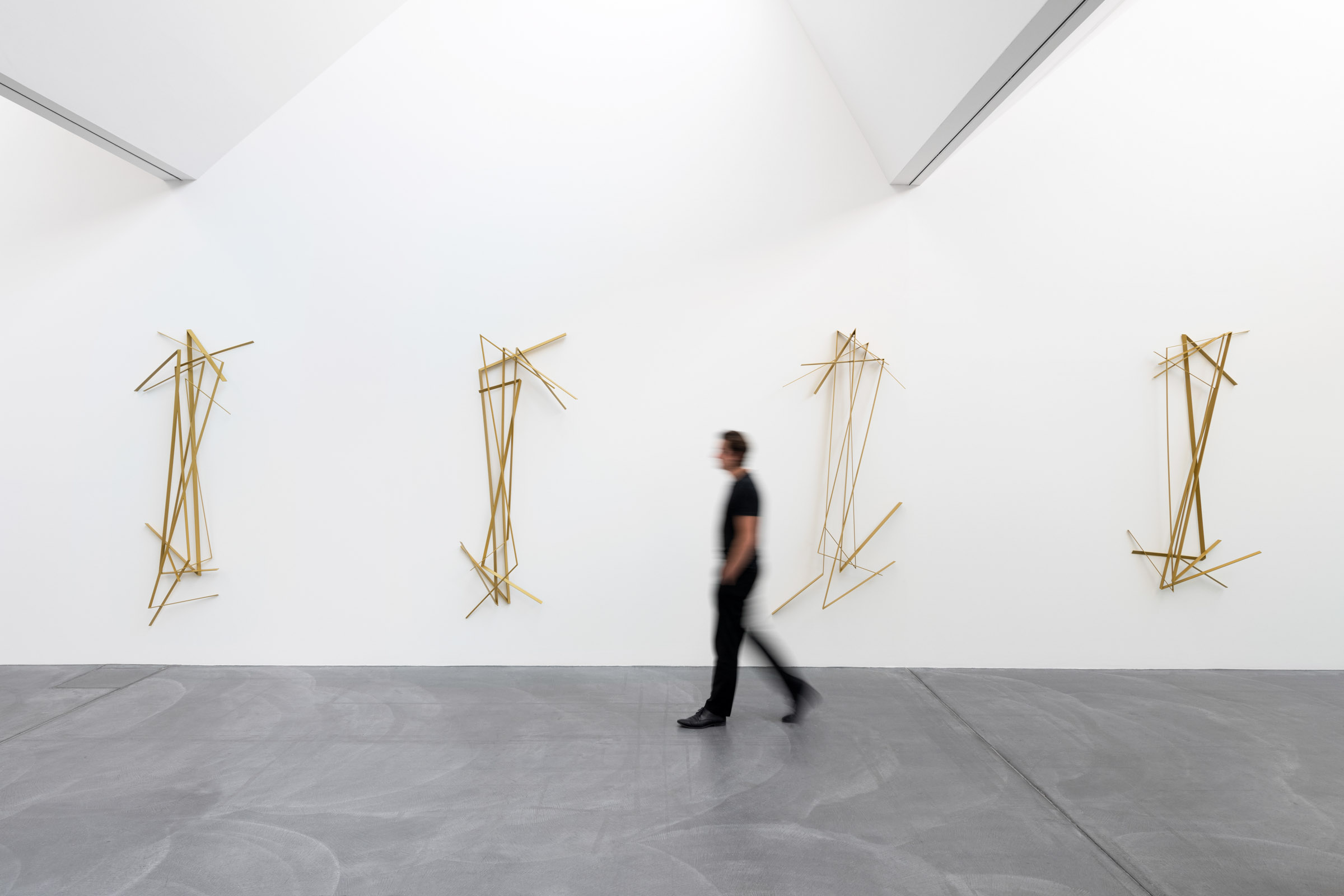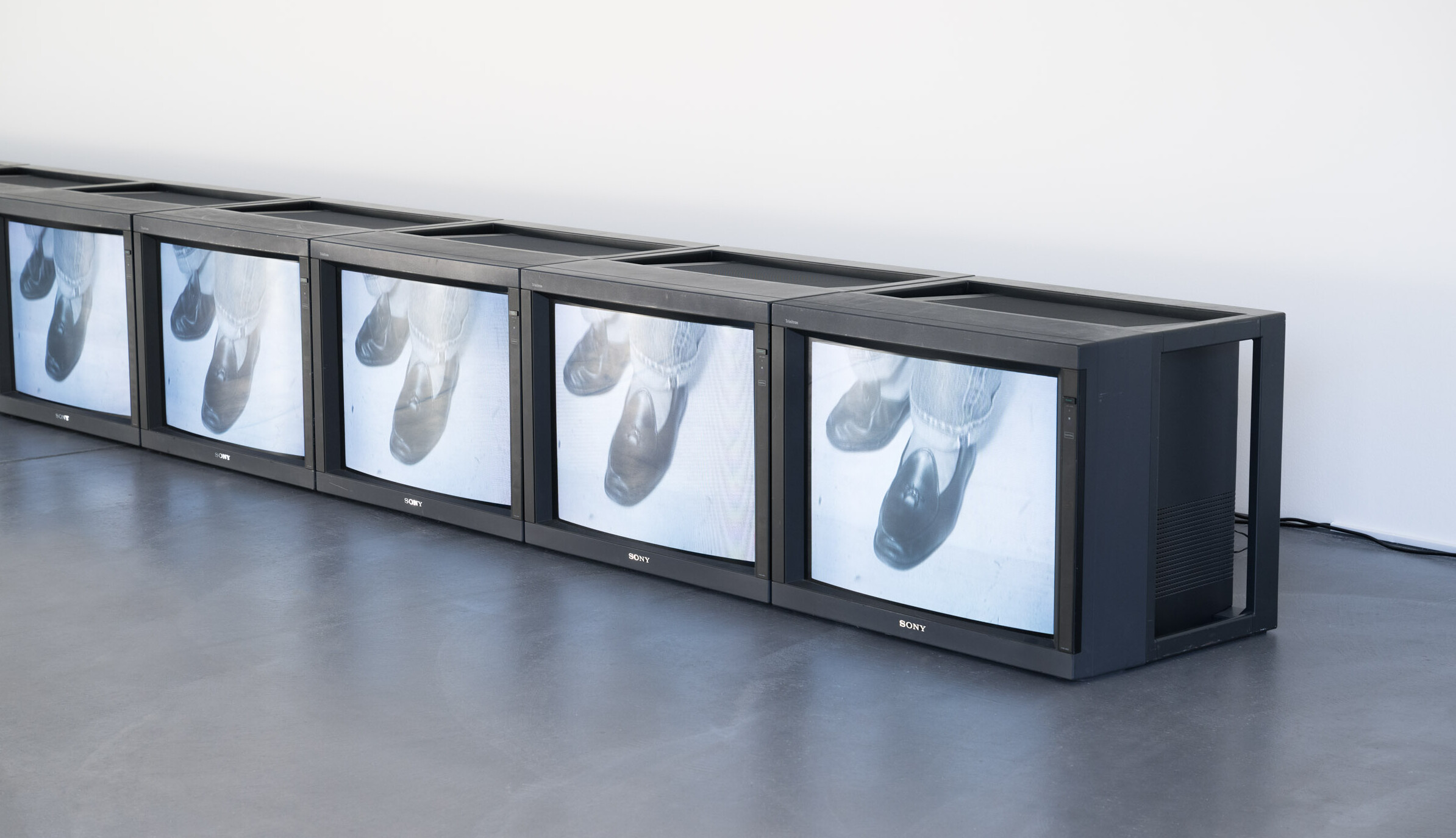‘At that moment, a certain poetry sets in’: Beat Zoderer on playing with perception

Watch the artist share a video tour of his new exhibition at Kunsthalle Weishaupt – and uncover fresh insights into his unique practice
‘My focus is always on the visual aspect of a work, which might, offer a completely different meaning when viewed from a distance – and then when you get closer and step in front of it, you are perhaps almost disappointed because you have been deceived and there is a new visual experience happening. At that moment, suddenly a certain poetry sets in,’ says Swiss artist Beat Zoderer, discussing his practice in a video[1] created to accompany his current exhibition at the Kunsthalle Weishaupt in Ulm, Germany.
- Beat Zoderer about his exhibition at Kunsthalle Weishaupt, video: Oleg Kauz
Titled Visuelle Interferenzen 1990–2020, the exhibition presents works from different phases of Zoderer’s career, asking the viewer to pay close attention to what they see. We are invited to discover ‘sculptures and reliefs made of common everyday materials such as adhesive labels, sheet metal and PVC foils’ – works intended to sharpen the viewer’s perception which, in their use of everyday materials, pose the question ‘what is art?’
In an accompanying exhibition text ‚The Square Must Go into the Circle, and the Other Way Around’ Christoph Schreier describes what distinguishes the artist and his working method from the Zurich Concrete Artists – and how Zoderer challenges the way we perceive art. Here, we share a selection of excerpts that offer a fittingly visual insight into his practice:
The ‘fouler of his own nest’
Clarity, logic, and stringency—these are the maxims of concrete art, which possibly found the best conditions to flourish in Protestant Switzerland. This is where they found a home, working in the middle of the last century, the “Zurich Concrete Artists” Max Bill, Richard Paul Lohse, Camille Graeser, Verena Loewensberg, and their entourage of lesser-known artists and designers. In 1955 Beat Zoderer was born in this art-historically significant and surely influential resonant space—Zoderer referred to the fascination of concrete art on several occasions.[2] But he was never to become a servile follower of its aesthetic doctrines, and his work emerged and developed in distance to all the dogmas of purity and clarity, even if they remain a point of reference for his art. In an interview he therefore speaks out against the disrespectful “thievery” on the body of concrete art and identifies himself as a “fouler of his own nest,” thereby saying much truth about his approach to art.[3] His strategy is not to rebel against the dominant heritage but rather subversion and a clever undermining of tradition.
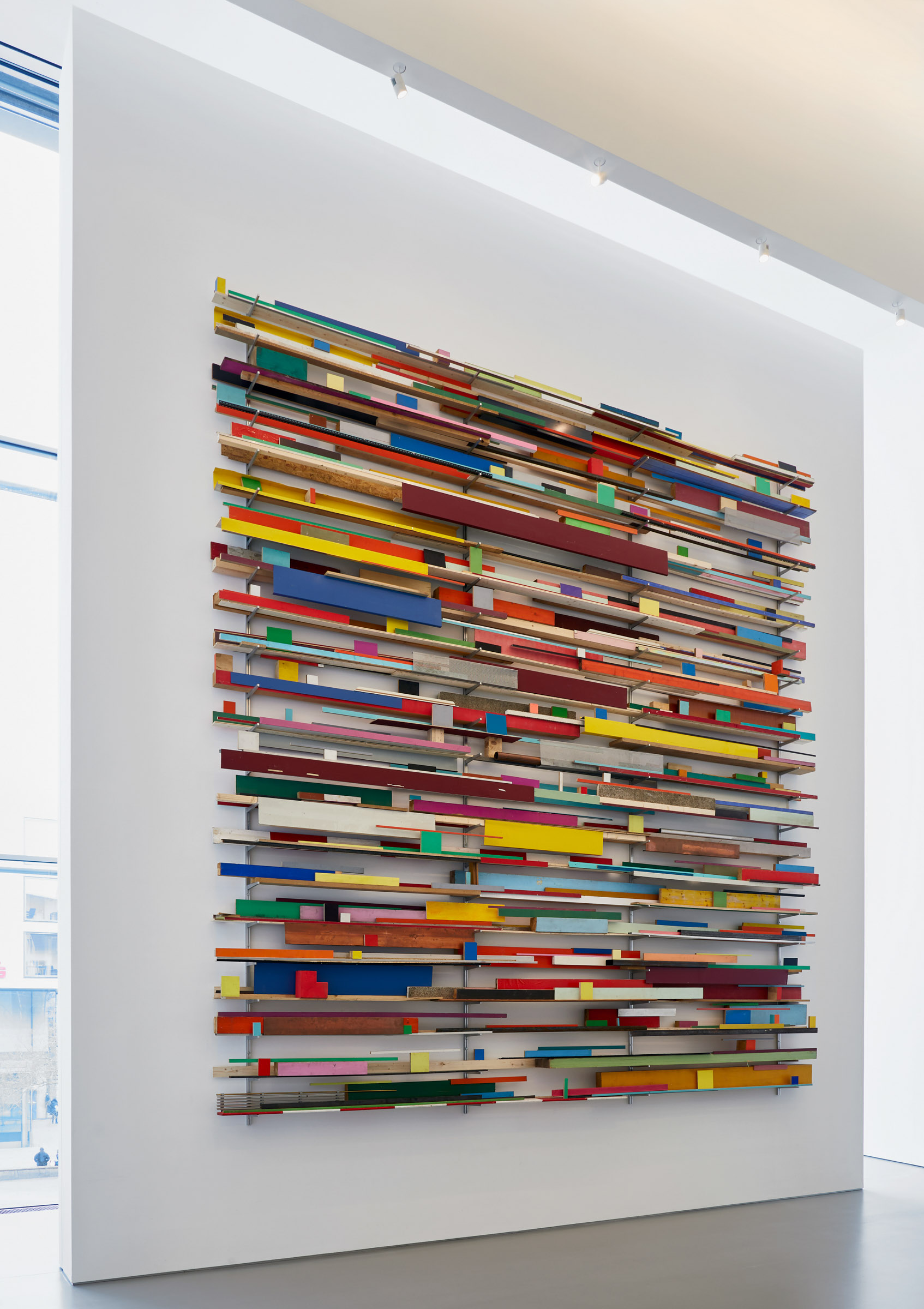
5. Legung, diverses Material (1.Legung, 1998, Art Unlimited, Basel)
Photo: Martin Müller
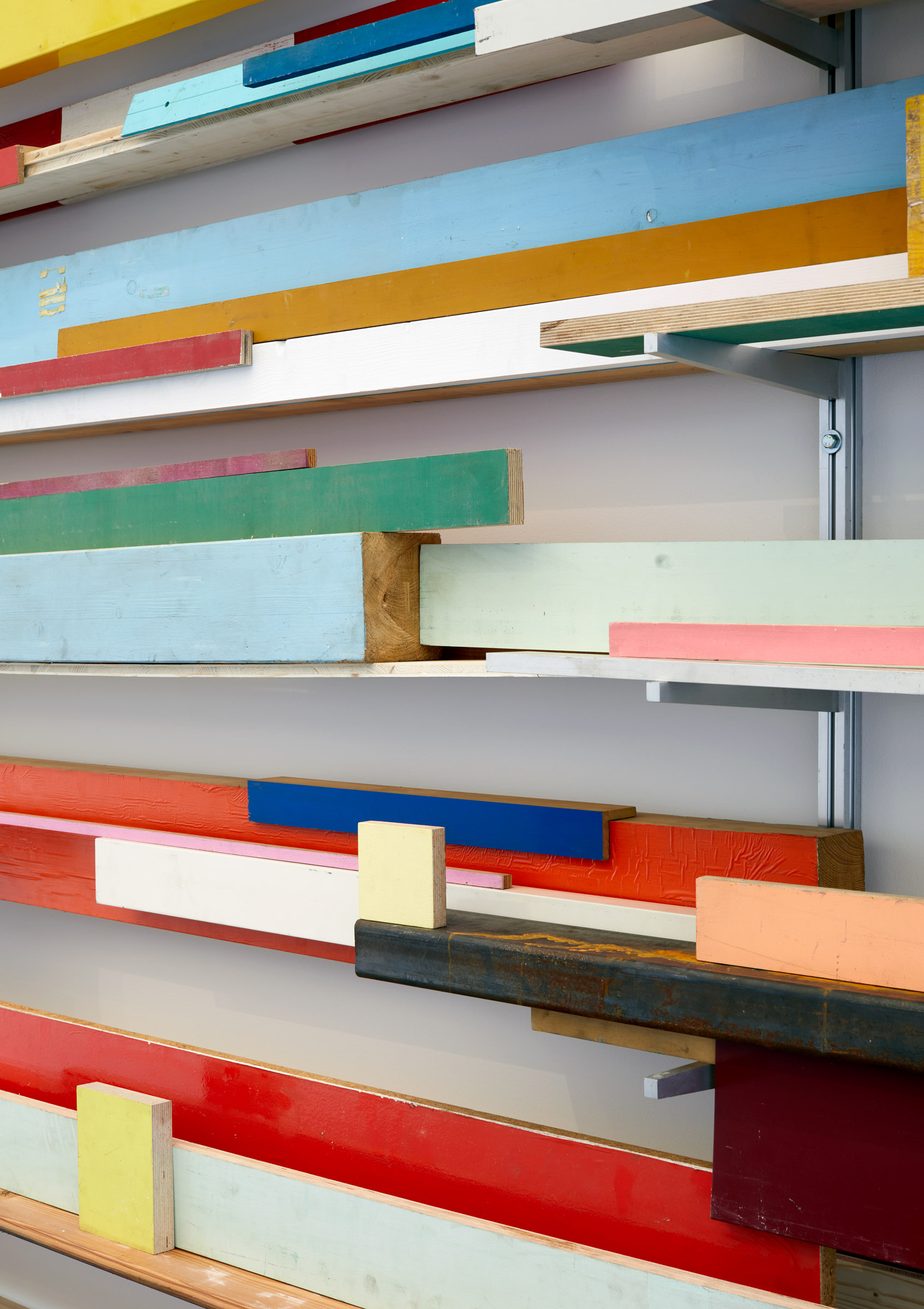
Photo: Martin Müller
‘The systematic way in which he proceeds and the formal organisation of his works’
Arbitrary subjectivity and ostentatious genius have no place here; instead materials and techniques are tested out in designs, and Zoderer glues, stacks, layers, wraps, and frames up to the point where the own dynamics of these per se rational processes tip over into hypertrophy and the grotesque.
‘An opposition to all authorities and established modes of thought’
Dada also had its roots in Zurich, in the circles of the Cabaret Voltaire, and its caustic opposition to all authorities and established modes of thought must surely be attractive to Zoderer—Hans Arp comes to mind. But his art certainly does not share the biting provocation and bitter undertone of Dada. His works are dominated by humor and wit (in the sense of cunning) and by the pleasure he takes in testing out parameters and borders, and in combination these two approaches construct the boldest connections and even make the impossible possible.
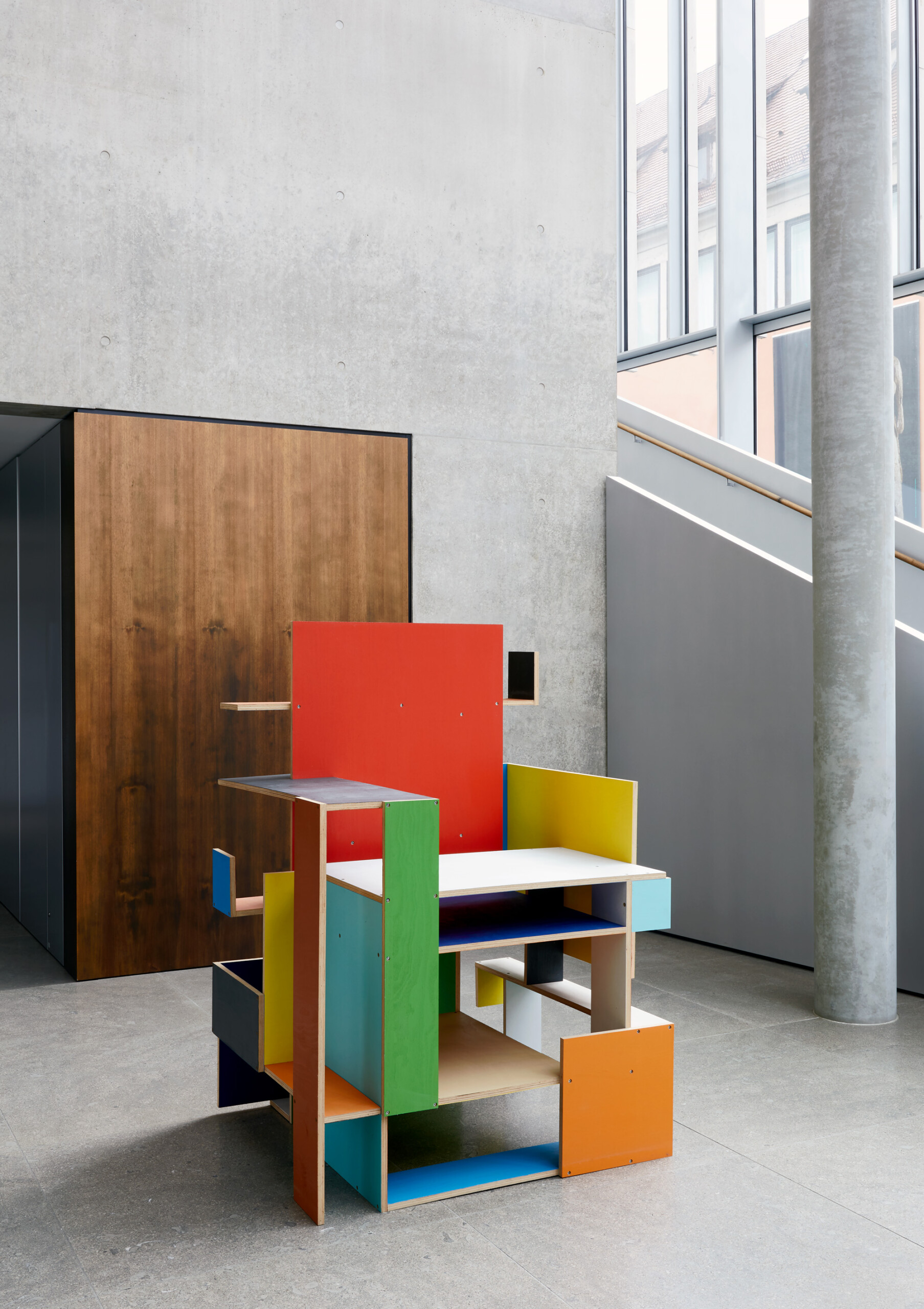
Installation view, Kunsthalle Weishaupt
Photo: Martin Müller

Exhibition view
Kunsthalle Weishaupt, Ulm, 2021
Photo: Martin Müller
‘Zoderer is not a defender of established certainties’
He often bestows completely new effects on the materials he uses, and sometimes he even makes his sculptures float—as if by magic[4]. Isn’t all of this possible under the aegis of art and artistry? For sure, Zoderer is not a defender of established certainties, of a “this way and no other”. For him, many things can be conceived of differently, and this knowledge also protects him, the late born, from the temptations of modernism, which disseminated its own frequently dogmatic creed of salvation.
‘Uncomfortable Utopia’
The famous Rietveld Chair is a good example of how much modernism endeavored to carry its utopias into ordinary people’s everyday lives[5]. But if you had ever sat down on the chair’s hard wooden seat, then you would know how uncomfortable utopias turned into reality can be. Zoderer is highly aware of the danger of this kind of enforced well-being and therefore he prefers ironic distance to all artistic fantasies of redemption. His way is to humorously keep matters undecided and to then confront us with works whose anarchist wit means that they can never be the prototypes for new aesthetic or social ideologies.
- Excerpts from ‚The Square Must Go into the Circle, and the Other Way Around. Beat Zoderer at Kunsthalle Weishaupt‘ by Christoph Schreier on the occasion of the exhibition: ‚Beat Zoderer – Visuelle Interferenzen 1990–2020‘ at Kunsthalle Weishaupt from 28 March until 10 October, 2021
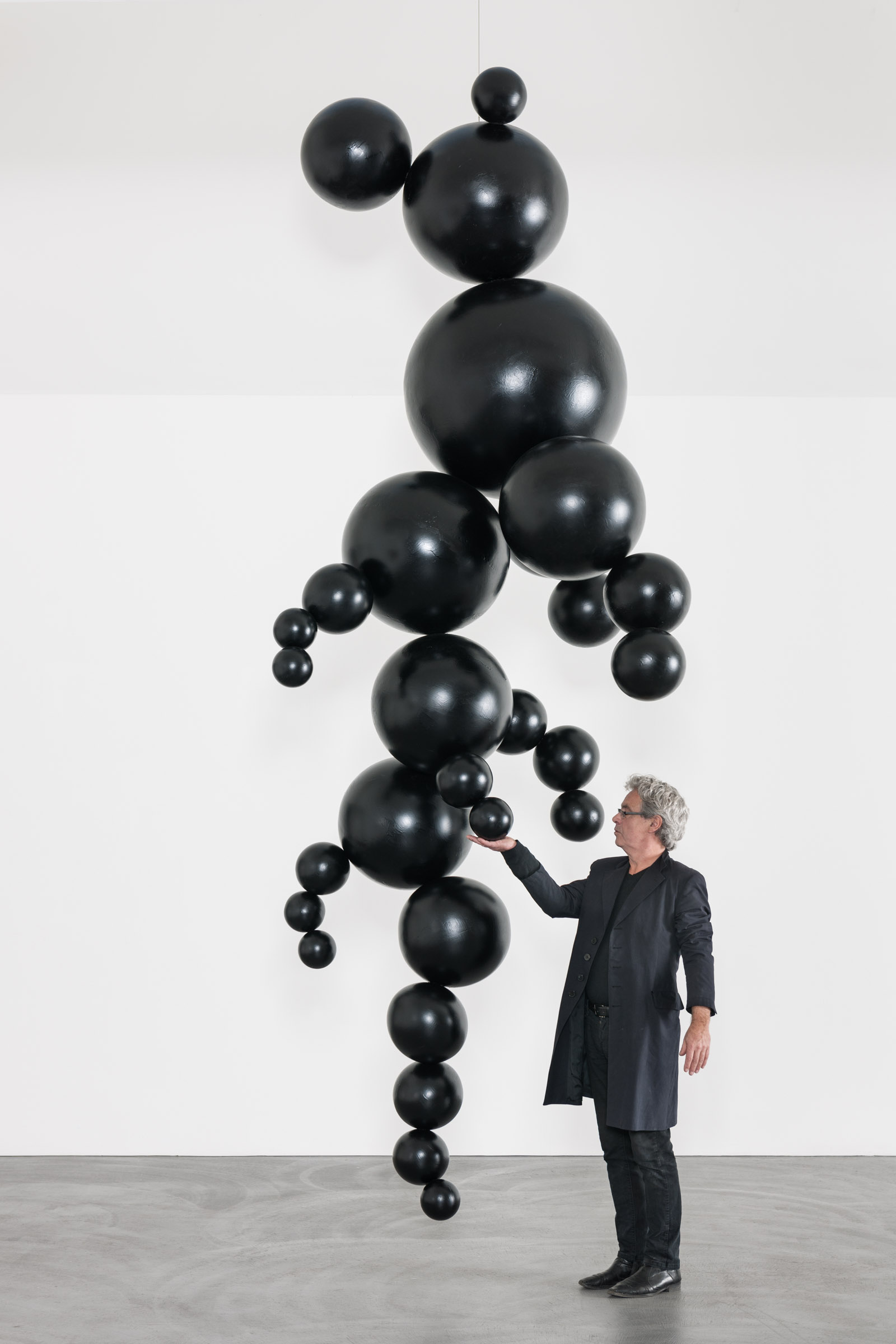
von Bartha, Basel, 2012

Aktenhüllen, geschichtet, 96×64cm, 6 Stück
Photo: André Huber, Neuenhof
- Video: Oleg Kauz
- See “Ein Gespräch zwischen Dorothea Strauss und Beat Zoderer,” in Beat Zoderer. New Tools for Old Attitudes, exh. cat. Haus Konstruktiv (Zurich 2008), p. 57.
- “‘Ich bin kein Leichenschänder, sondern ein Nestbeschmutzer.’ Beat Zoderer im Gespräch mit Volker Adolphs und Christoph Schreier,” in Beat Zoderer, Der doppelte Boden ist tiefer als man denkt, exh. cat. Kunstmuseum Bonn (2002), p. 137
- A photograph shows the artist posing as if to juggle with a large cylindrical sculpture.
- Gerrit T. Rietveld, Red and Blue Chair, 1918, wood, varnished, 83 x 65.5 x 88 cm.

Exhibition view
Kunsthalle Weishaupt, Ulm, 2021
Photo: Martin Müller
